
Snakes Around Las Vegas, Wildlife Around Las Vegas
 |
General Description: Western Diamond-backed Rattlesnakes (Crotalus atrox) are large, heavy-bodied rattlesnakes with a wide, triangular head. The dorsal color appears faded, generally grayish with darker diamond-shaped blotches surrounded by white borders. The individual scales are speckled with black. This species can be confused with Mojave [Green] Rattlesnakes. However, Diamond-backed Rattlesnakes tend to have black-and-white bands on the tail that are equal in width, the black eyestripe contacts the mouth (upper lip is dark like the eyestripe), and the posterior white eyestripe connects to the corner of the mouth. These snakes are venomous. Do not attempt to handle rattlesnakes; rather, enjoy your good luck of finding one from a distance (minimum 4 feet away) and leave them alone. Taxonomy: Pit Vipers Family (Viperidae) |
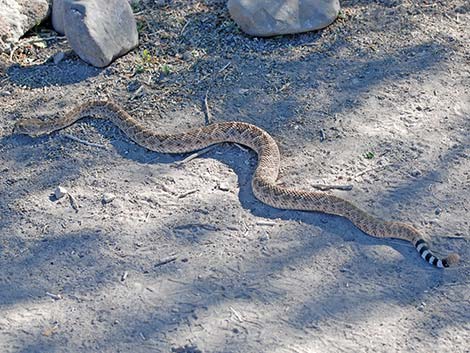 |
Technical Description: Body length 3 to 5 ft (maximum 7.5 ft). Body thick. Head wide, triangular, and with two distinct, light-colored diagonal stripes on the side of the face bordering a darker, wider stripe; the rear line extends from behind the eye to the upper lip ahead of the corner of the mouth, while the front stripe extends from the front of the eye to the middle of the upper lip. Dorsal color generally gray with dark diamond-shaped or hexagonal marks surrounded by white borders. Smaller, fainter blotches on the sides. Dorsal scales keeled, flecked with black, giving it a rough, speckled appearance. Overall color dull, giving it a faded appearance. Tail with broad black and white rings; black rings as wide or wider than the white rings. Diet: Primarily feeds on small mammals (e.g., squirrels, rabbits, mice), lizards, and birds. Habitat: This species occurs in a variety of habitats, especially rocky foothills up to 7,000 ft in elevation, but also open desert in creosote bush areas, woodlands, and sandy mesquite-dune habitats. |
 Posterior eyeline ends at the corner of the mouth |
Range: Occurs throughout the southwestern U.S. (California to Oklahoma) and northern Mexico. In Nevada, this species is restricted to the southern-most tip of the state and along the Colorado River. Specimens have been reported from the Searchlight area. Breeding: Gives birth to 4 to 23 live young in the summer and fall. Similar Species: This species generally can be identified from other species of rattlesnakes in southern Nevada by the presence of black-and-white rings on the tail that are approximately equal in width, and by the eye-line that ends at the corner of the mouth; however, definite identification may require counting scales atop the head. The Mojave [Green] Rattlesnake has narrow, black tail rings and the white stripe behind the eye extends to beyond the corner of the mouth. Comments: This species is the largest of the western rattlesnakes. Also called the Coon-tail Rattlesnake. Generally crepuscular and nocturnal, but sometimes diurnal. Special Remarks: Venomous. |
 Many, small, granular scales between the ocular scales |
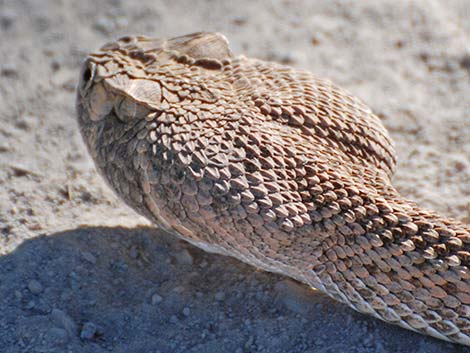 Many, small, granular scales between the ocular scales |
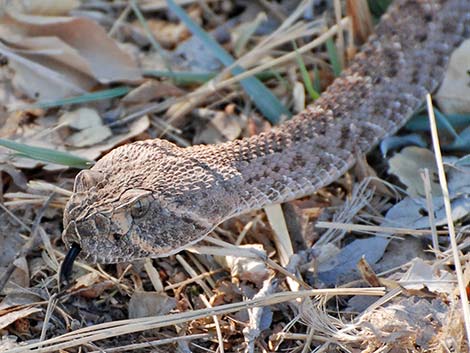 Eye stripes angle down abruptly and all touch the upper lip |
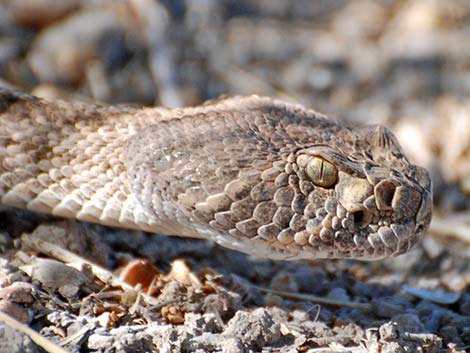 Eye stripes angle down abruptly and all touch the upper lip |
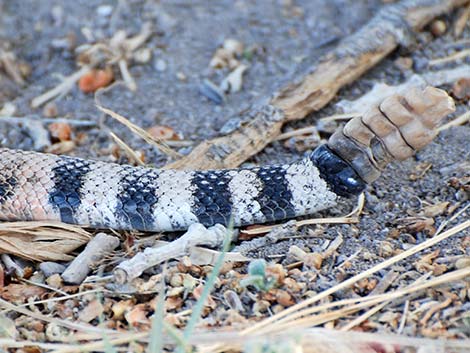 Black and white bands on tail tend to be equal in width |
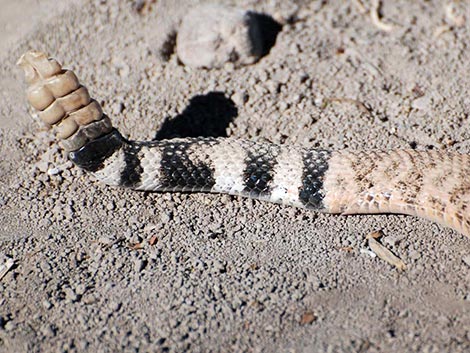 Black and white bands on tail not always equal in width |
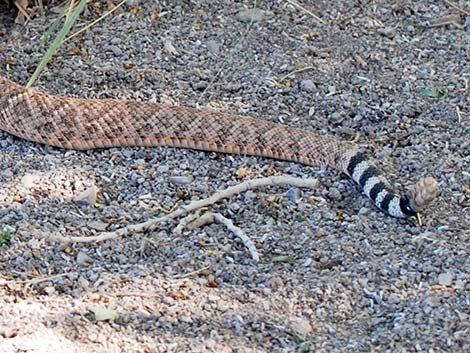 Black and white bands on tail are approximately equal in width |
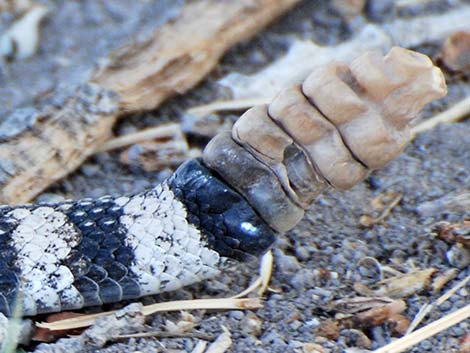 First rattle scale (proximal rattle segment) tends to be solid black |
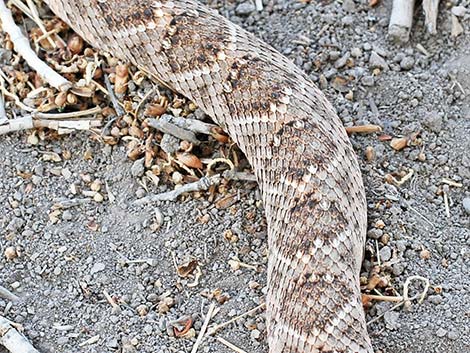 Blotchy dorsal pattern appears fuzzy, without distinct edges |
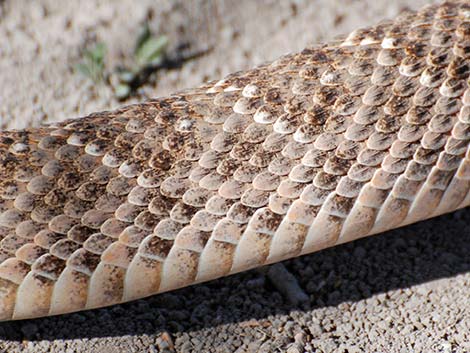 Blotchy dorsal pattern appears fuzzy, without distinct edges |
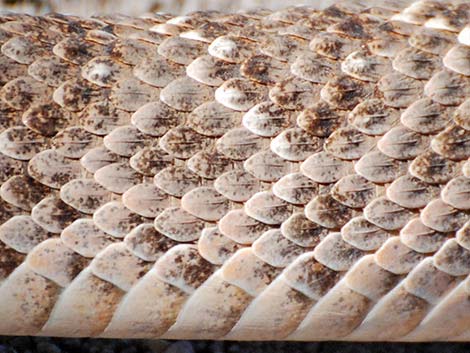 Individual scales are speckled with black |
 Individual scales are speckled with black |
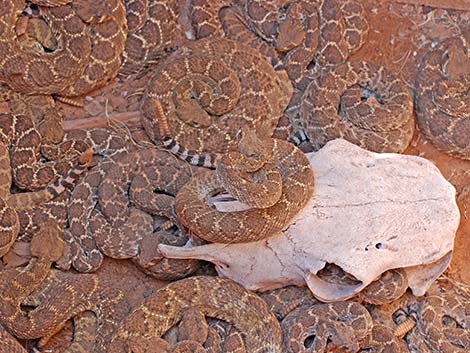 Sad snakes in a West Oklahoma snake-pit |
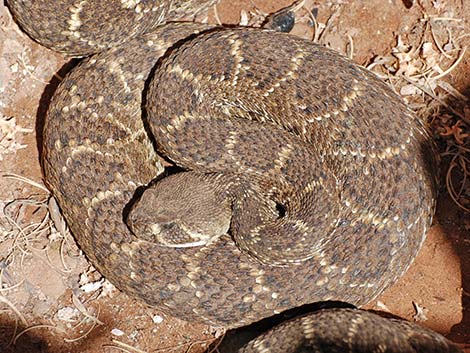 Western Diamond-backed Rattlesnake |
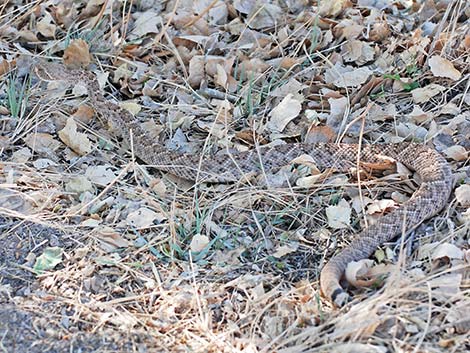 |
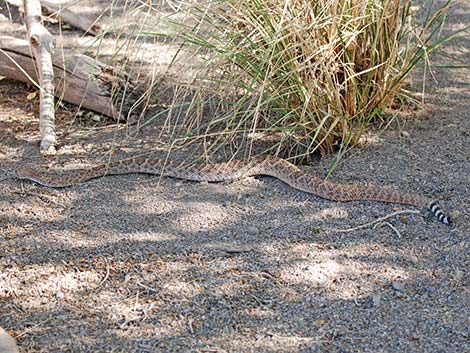 |
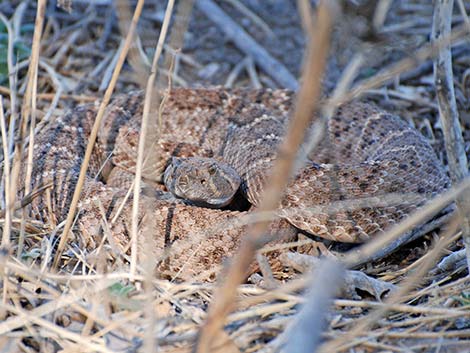 |
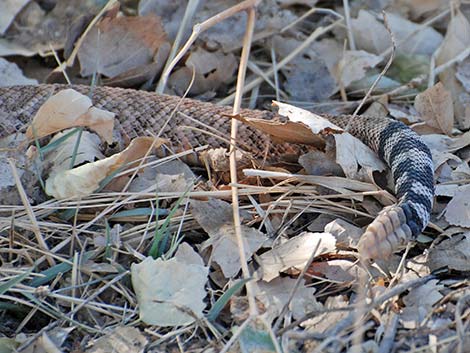 |
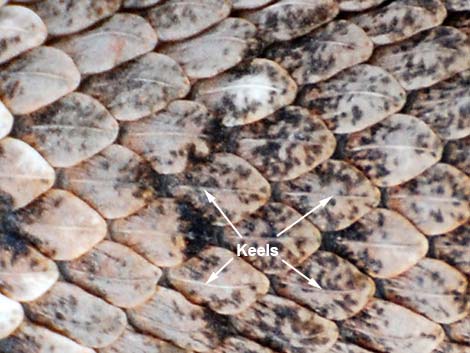 |
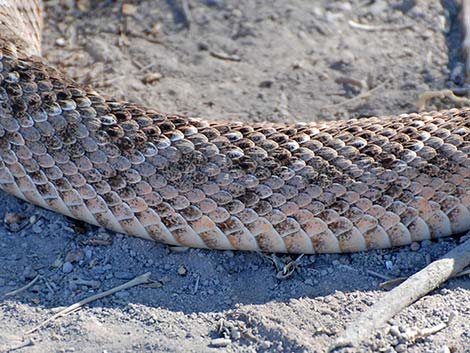 |
Note: All distances, elevations, and other facts are approximate.
![]() ; Last updated 250625
; Last updated 250625
| Snakes Around Las Vegas | Wildlife Around Las Vegas | Glossary | Copyright, Conditions, Disclaimer | Home |